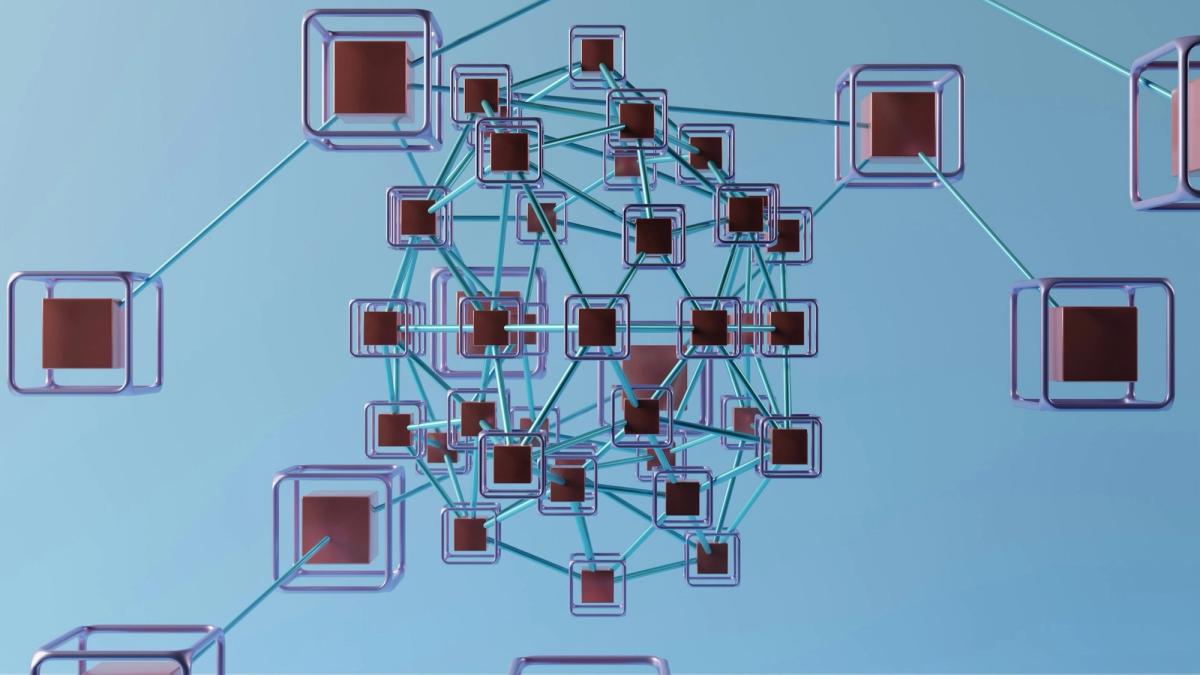Neural Network vs. Machine Learning Guide to Master AI Concepts Faster
Published on Jun 24, 2025
Get Started
Fast, scalable, pay-per-token APIs for the top frontier models like DeepSeek V3 and Llama 3.3. Fully OpenAI-compatible. Set up in minutes. Scale forever.
With the rapid growth of machine learning, many businesses face the challenge of determining which technology best meets their needs. Neural networks and traditional machine learning models are excellent options, but they differ significantly in their operations and the types of problems they solve. In this article, we’ll explore the differences between neural networks and other machine learning methods so you can choose the best model for your AI project. As you’ll see, while neural networks are a machine learning model, they differ from traditional approaches. Understanding these differences will help you build more innovative AI solutions with confidence. Additionally, What is Inference in Machine Learning?
One way to quickly understand how neural networks differ from traditional machine learning models is with Inference's AI inference APIs. These easy-to-use tools can help you get to the business of building your AI solution without getting bogged down in technical details.
What is a Neural Network?

Neural networks are a subset of machine learning, which is itself a subset of artificial intelligence (AI). The term "neural network" is often used interchangeably with the phrase "deep learning," but deep learning is a specific type of neural network that contains many layers (hence the name "deep").
Learning Like Humans
Like humans, neural networks learn by example. They excel at identifying patterns and making predictions based on complex relationships within large datasets. Neural networks are beneficial in instances where the underlying patterns in the data are unknown and difficult to discern, even for experts in the field.
Real-World Applications
A neural network could analyze thousands of medical images to identify cancerous tumors without any human intervention. In this case, the neural network would not only learn to predict tumor presence but also identify discrete features associated with tumors that may be invisible to radiologists.
Neural networks possess a unique architecture that makes them particularly powerful for a wide range of tasks.
Key Components of Neural Networks
These building blocks enable them to process information and learn from data, much like the human brain.
- Nodes (Neurons): These individual units in a neural network receive input, process it, and send output to the next layer.
- Layers: Neural networks are made up of several layers. The Input Layer is where data enters the network.
- Hidden Layers: These layers process the data by applying mathematical functions to identify patterns.
- Output Layer: This layer produces the final result or prediction.
- Weights: Weights control the strength of the connection between nodes, enabling the network to determine the importance it assigns to each input.
Types of Neural Networks
Neural networks come in various architectures, each designed to tackle specific types of problems and data:
- Feedforward Neural Networks: They are the simplest type of neural networks, where data flows in a unidirectional manner, moving from the input layer to the output layer without any feedback loops.
- Recurrent Neural Networks (RNNs): These networks feature connections that enable feedback loops, making them well-suited for sequential data and tasks that require memory.
- Convolutional Neural Networks (CNNs): CNNs are particularly well-suited for image and video analysis, using convolutional layers to detect patterns automatically.
- Generative Adversarial Networks (GANs): GANs consist of two neural networks, namely a generator and a discriminator, that collaborate to produce lifelike data, commonly used for generating images and videos.
- Long Short-Term Memory Networks (LSTMs): A type of RNN that can retain information for an extended period, making them effective in tasks involving sequential data.
Advantages of Neural Networks
Neural networks are capable of identifying complex patterns and relationships in data. They can be applied to various problems, including:
- Classification
- Regression
- Clustering
They are effective in domains like:
- Natural language processing
- Computer vision
- Robotics
Neural networks automatically extract and combine features from raw data. They utilize advanced hardware, such as GPUs and TPUs, for faster training and inference. Neural networks can learn directly from raw inputs to desired outputs without extensive preprocessing.
Disadvantages of Neural Networks
While neural networks can be powerful tools for machine learning, they do have limitations. Here are some of the common challenges associated with using neural networks:
Data Requirements: Large Datasets
It will be recalled that neural networks, also known as deep learning networks, embed a highly powerful mathematical construct that requires enormous quantities of labeled data for optimal training. This is particularly true about the aspect of compiling, categorizing, and archiving such large datasets, which are costly and time-demanding.
Quality of Data
Neural networks are highly sophisticated systems; they are more sensitive to the quality of data fed into them. This implies that noisy, incomplete, or biased data is likely to result in poor model performance or models that are biased.
Overfitting Complex Models
Due to the large number of parameters involved, the neural network tends to overfit when trained on a limited number of data samples. They can simply memorize the training data rather than devise a new function that would generalize data not previously trained on.
Regularization Techniques
Measures such as dropout, weight decay, L2 regularization, and data augmentation can help mitigate this drawback or smooth out the boundary between overfitting and optimal model complexity.
Computational Resources: High Computational Cost
Training a deep neural network is computationally expensive, and the training process may take much time if the computing device is not high-end, such as a GPU or TPU.
Energy Consumption
Developing large-scale neural networks requires substantial amounts of energy, an issue that has both environmental implications and high operating costs.
Training Time: Long Training Cycles
Training deep neural networks can take anywhere from days to months, depending on the model size and dataset size. This extended training time also makes the process of experimentation and hyperparameter tuning slow, as well as consuming a lot of resources.
Hyperparameter Tuning
Neural networks depend on the hyperparameters (for instance, learning rate, batch size, and number of layers), which makes the model development process much more complex and time-consuming.
Vanishing/Exploding Gradient Problem: Vanishing Gradients
In dense networks, gradients are minimal, which causes the weights in earlier layers to be updated very slowly or not at all, thereby slowing down learning or even causing it to stop completely.
Exploding Gradients
Gradients, though, can become large, leading to significant weight updates and making the training process unstable. Such methodologies as the gradient clipping assist in this sense but the issue is not eliminated.
Application of Neural Networks
Neural networks can be applied to a wide range of tasks. Here is a brief list of examples:
- Object Detection: identifies and classifies objects in images and videos.
- Facial Recognition: Matches faces for security and social media tagging.
- Sentiment Analysis: Analyzes text to determine sentiment or opinion.
- Language Translation: Translates text from one language to another.
- Voice Assistants: Powers virtual assistants like Siri or Alexa.
- Transcription: Converts spoken language into written text.
- Control Systems: Manages complex control tasks in robotic systems.
- Path Planning: Plans optimal paths for robots in dynamic environments.
- Fraud Detection: Detects fraudulent activities using anomaly detection.
- Market Prediction: Predicts stock prices and market trends.
Is ChatGPT a neural network?
Though it’s accurate to describe the GPT models as artificial intelligence (AI), this is a broad description. More specifically, the GPT models are neural network-based language prediction models built on the Transformer architecture. They analyze natural language queries, known as prompts, and predict the best possible response based on their understanding of language.
GPT Model Capabilities
To do that, the GPT models rely on the knowledge they gain after they’re trained with hundreds of billions of parameters on massive language datasets. They can take input context into account and dynamically attend to different parts of the input, making them capable of generating long responses, not just the next word in a sequence.
Transformer Neural Networks
When asked to generate a piece of Shakespeare-inspired content, a GPT model does so by remembering and reconstructing new phrases and entire sentences with a similar literary style. There are different types of neural networks, like recurrent and convolutional. The GPT models are transformer neural networks.
Self-Attention Mechanism
The transformer neural network architecture uses self-attention mechanisms to focus on different parts of the input text during each processing step. A transformer model captures more context and improves performance on natural language processing (NLP) tasks. It consists of two main modules, which we explain below.
Encoder Transformers
Encoder Transformers preprocess text inputs as embeddings, which are mathematical representations of words. When encoded in a vector space, words that are closer together are expected to be closer in meaning. These embeddings are processed through an encoder component that captures contextual information from an input sequence.
Word Embeddings and Weights
When it receives input, the transformer network’s encoder block separates words into embeddings and assigns a weight to each. Weights are parameters to indicate the relevance of words in a sentence. Additionally, position encoders allow GPT models to prevent ambiguous meanings when a word is used in other parts of a sentence.
Positional Encoding Example
Position encoding allows the transformer model to differentiate the semantic differences between these sentences: A dog chases a cat. A cat chases a dog. So, the encoder processes the input sentence and generates a fixed-length vector representation, known as an embedding. The decoder module uses this representation.
The decoder uses the vector representation to predict the requested output. It features built-in self-attention mechanisms that focus on different parts of the input and predict the corresponding output.
Decoder's Role & Parallelization
Complex mathematical techniques enable the decoder to estimate multiple outputs and predict the most accurate one. Compared to its predecessors, such as recurrent neural nets, transformers are more parallelizable because they do not process words sequentially one at a time; instead, they process the entire input all at once during the learning cycle.
Due to this and the thousands of hours engineers spent fine-tuning and training the GPT models, they’re able to give fluent answers to almost any input you provide.
Related Reading
What is Machine Learning?

Machine Learning, or ML, is a subset of Artificial Intelligence (AI) that enables computer systems to learn and improve from experience without being explicitly programmed. In traditional programming, a human programmer writes specific instructions for a computer to execute tasks. In contrast, machine learning algorithms use data to learn patterns and make decisions autonomously.
The Four Types of Machine Learning
Machine Learning can be categorized into several types based on the learning approach and the availability of labeled data:
Supervised Learning
In this type, the algorithm learns from labeled data, where each data point is paired with its corresponding target output. The model makes predictions on new, unseen data based on the patterns learned during training.
Unsupervised Learning
Here, the algorithm works with unlabeled data, attempting to discover hidden patterns or groupings without explicit guidance.
Semi-Supervised Learning
It is a hybrid approach that combines elements of both supervised and unsupervised learning, utilizing labeled and unlabeled data to enhance learning accuracy.
Reinforcement Learning
In this type, the algorithm interacts with an environment and receives feedback in the form of rewards or penalties for its actions, learning to make decisions to maximize rewards.
Active Learning
An iterative process where the algorithm selects the most informative data points to be labeled by an oracle, thus optimizing the learning process.
Applications of Machine Learning
Machine learning is everywhere, and here are some of the glimpses of it:
Recommendation Systems
Netflix or Amazon uses machine learning (ML) to analyze your past behavior and recommend movies, products, or shows.
Fraud Detection
Banks use ML algorithms to detect unusual transactions and prevent fraud.
Autonomous Vehicles
Self-driving cars rely heavily on machine learning (ML) to interpret sensor data and make real-time decisions.
Healthcare
Machine learning (ML) is used to diagnose diseases, predict patient outcomes, and personalize treatment plans. With these applications in mind, it’s clear that ML is reshaping industries and has a transformative impact on our world.
Neural Networks & Machine Learning
Neural networks are an advanced subset of machine learning, often at the heart of deep learning models. While traditional ML algorithms rely on statistical methods, neural networks mimic how our brains process information.
Deep Learning & Neural Networks
Deep learning refers to the use of deep neural networks with multiple hidden layers, enabling machines to make decisions based on complex features extracted from data. Neural networks are particularly adept at processing unstructured data, such as images, videos, and text, where traditional machine learning may fail.
How to Enhance Machine Learning with Neural Networks?
In essence, neural networks bring machine learning to life, enabling it to handle more sophisticated tasks that require high levels of abstraction, such as recognizing emotional tone in speech or understanding the context of an image. Its deep architecture enables models to process and learn from vast data, refining predictions over time.
Accuracy Boost
Neural networks are capable of modeling highly non-linear relationships within data, allowing them to capture complex patterns that traditional machine learning algorithms often miss. For example, CNNs outperform logistic regression in image classification tasks by learning hierarchical features, such as edges, textures, and objects.
Enhanced Accuracy
In benchmarks like MNIST or ImageNet, CNNs achieve significantly higher accuracy than simpler models, demonstrating their superior ability to learn from intricate features and interactions between data points. This enhances prediction accuracy, particularly in tasks like image recognition and natural language processing.
Automatic Feature Extraction
One of the key advantages of neural networks is their ability to automatically extract relevant features from raw data. This eliminates the need for time-consuming manual feature engineering, allowing models to work directly with unstructured data, such as:
- Images
- Text
- Audio
In CNNs, for example, early layers learn to detect edges and textures, while deeper layers learn more complex features, such as objects. The network learns these important features during training, which enhances model efficiency and reduces the need for human intervention.
Scalability
Neural networks are designed to scale effectively with large datasets, making them ideal for big data applications. Traditional machine learning algorithms often struggle to maintain performance as dataset sizes grow. In contrast, neural networks, intensive learning models, excel with larger volumes of data.
Benefits and Trade-offs
These models often outperform conventional algorithms in tasks like speech recognition and image classification. Nevertheless, this scalability comes at a cost; neural networks require more compute and memory than traditional models. Using neural networks in machine learning brings structured learning and the ability to handle massive, complex datasets.
Advantages of Machine Learning
- Automates tasks like data entry, cleaning, and transformation
- Enhances decision-making with data analysis and predictive models
- Provides real-time insights into various business processes
- Tailor's product recommendations based on user behavior
- Identifies unusual patterns in data, which is helpful in fraud detection
Challenges of Machine Learning
Data Quality and Quantity
- Insufficient Data: To train the ML models, they need a significant size of the data set, however, often it becomes challenging to amass an adequate amount of quality data, and this is much more relevant for the specific applications of the models.
- Noisy or Incomplete Data: Many real-life datasets contain measurement errors, missing values, or noisy entries, which can negatively influence the model's quality.
- Data Imbalance: Many datasets exhibit imbalances between different classes or categories, leading to models that are biased and perform poorly on minority classes.
Feature Engineering
- Manual Feature Extraction: Performing feature selection and feature engineering with traditional machine learning algorithms takes quite a lot of time and needs domain-specific knowledge.
- Irrelevant Features: Adding excessive features can augment execution time, but may be counterproductive because the features might not generalize well, leading to overfitting.
Overfitting and Underfitting
- Overfitting: If a model is very complex and starts to fit the noise in the training data instead of the signal, the model will have difficulty making predictions in other cases.
- Underfitting: An improper model, a simple model could not capture the sufficient complexity of a data set, and in turn, fails to learn effectively from training and test data.
Model Interpretability
- Black Box Models: There are other problems with black box models, of which the most crucial one is that these complex models, such as neural nets and deep learning systems, tend to be highly opaque; this means that it is not easy to understand how decisions are made.
- Trust and Compliance: In specific industries where compliance with regulations is mandatory, such as the healthcare and finance industries, interpretability is vital, as it enhances overall compliance, transparency, and accountability in decision-making.
Computational Resources
- High Computation Power: Training large models and intense neural networks involves the use of devices such as GPUs and TPUs, which can be expensive.
- Long Training Times: Some machine learning (ML) models, especially those with many layers, may require a considerable amount of time to train, thereby delaying the development and deployment process.
Application of Machine Learning
- Diagnostics: Assists in diagnosing diseases from medical images or patient data
- Inventory Management: Optimizes inventory based on sales forecasts
- Customer Segmentation: Groups customers based on purchasing behavior for targeted marketing
- Content Recommendations: Suggest movies, music, or articles based on user preferences
- Content Creation: Assists in creating content like music or artwork through generative models
- Quality Control: Inspect products for defects using image recognition
- Supply Chain Optimization: Enhances logistics and supply chain management
Neural Network vs. Machine Learning

Definition:
Machine Learning (ML) is a subset of artificial intelligence that enables machines to learn from data. Neural Networks, on the other hand, are a type of ML model inspired by the human brain's structure.
Focus:
ML focuses on making predictions or decisions based on patterns in data. Neural Networks aim to mimic the brain's neural structure to handle more complex tasks.
Learning Approach:
ML typically learns from structured data using various algorithms. Neural Networks learn through a system of layered, interconnected nodes known as neurons.
Data Requirement:
Machine Learning models can often work effectively with smaller datasets, depending on the algorithm. Neural Networks, however, generally require large datasets to train effectively.
Key Components:
ML relies on algorithms, data, and models. Neural Networks consist of nodes (neurons), layers (input, hidden, output), and weights.
Structure:
ML models are often simpler and more straightforward in structure. Neural Networks are more complex, involving multiple layers of neurons.
Pattern Recognition:
ML identifies patterns using statistical methods. Neural Networks detect more abstract and complex patterns through deep learning techniques.
Application:
Machine Learning is commonly used in areas such as finance, marketing, and healthcare. Neural Networks are frequently used in image recognition, language processing, and gaming.
Usage:
ML works best with structured, labeled data. Neural Networks are ideal for unstructured data types such as images, text, and sound.
Complexity:
Machine Learning models are typically easier to implement and understand. Neural Networks are more complex and often require significant computational power.
Machine learning and neural networks share several similarities, including:
- Data-driven approach
- Pattern recognition
- Adaptive learning
Both create models trained on data to make predictions; without data, these algorithms wouldn’t know how to infer relationships. They also focus on finding patterns in data, and since they are very good at finding patterns, they are used in various applications.
Lastly, both can improve with more data and training, so they become adaptive with increased performance and generalization.
Machine Learning vs Neural Networks: Key Differences
Neural networks are powerful machine learning models, but are not always the best choice for a given problem. Here are some key differences in scope, structure, training, interpretability, and deployment.
Scope and Complexity
Machine learning encompasses a variety of algorithms like linear regression, decision trees, and support vector machines (SVMs). In contrast, neural networks are a subset of ML focusing on deep learning architectures, including:
- Feedforward
- Convolutional
- Recurrent neural networks
Structure and Function
Machine learning models typically use single-layer or shallow structures, which are easier to interpret. Neural networks, on the other hand, use deep architectures with multiple layers (hidden layers), which makes them more complex and harder to interpret.
Model Training
Training machine learning models is generally faster and requires less data and computational resources. In contrast, training neural networks is computationally intensive, often requiring specialized hardware (GPUs, TPUs) and large datasets for effective learning.
Feature Engineering
Machine learning relies heavily on manual feature engineering and domain expertise to improve model performance. Neural networks automatically perform feature extraction and representation learning, minimizing the need for manual feature engineering.
Model Interpretability
Machine learning models are generally more interpretable, allowing for easier understanding and explanation of decisions. Neural networks are often black boxes, making it difficult to interpret or explain the reasoning behind decisions.
Learning Paradigms
Machine learning includes:
- Supervised learning
- Unsupervised learning
- Semi-supervised learning
- Reinforcement learning
Neural networks primarily focus on supervised and reinforcement learning, but are also used in unsupervised learning (e.g., autoencoders).
Algorithm Types
Machine learning algorithms include:
- Linear models
- Tree-based models
- Clustering algorithms
- Ensemble methods
The types of neural networks include:
- Feedforward networks
- Convolutional networks
- Recurrent networks
- Transformers
Performance Metrics
Performance is typically evaluated using metrics like:
- Accuracy
- Precision
- Recall
- F1 score
- ROC-AUC
Similar metrics are used for neural networks, but performance is also assessed using loss functions specific to the architecture (e.g., cross-entropy and MSE).
Model Deployment
Machine learning models are easier to deploy and integrate into existing systems. Deployment can be more complex for neural networks due to the need for optimized inference frameworks and hardware.
Hyperparameter Tuning
The hyperparameters of machine learning models are often simpler and can be manually tuned or optimized using grid or random search. Neural networks require extensive hyperparameter tuning, usually involving complex search strategies like Bayesian optimization or Hyperband.
Key Differences Between Machine Learning and Neural Networks
Here's a summary of the key differences between machine learning and neural networks:
- Machine Learning models can vary in complexity depending on the specific algorithm being used. Simpler models are easier to interpret and often require less computational power. They're generally effective even with smaller datasets and can be used on standard hardware. Typical use cases include data analysis, traditional predictive modeling, and tasks that aren't very data-intensive.
- Neural Networks, on the other hand, tend to be more complex due to their multi-layered architectures. They often require large datasets to perform well and are considered less interpretable—frequently described as "black boxes." Training neural networks usually demands significant computational power, often involving GPUs. They're particularly suited for tasks like image and speech recognition, large language models, and other data-intensive applications.
When to Use Machine Learning vs Neural Networks
Selecting between machine learning and neural networks depends on the specific requirements of the problem. For tasks that require complex pattern recognition, such as image or speech processing, neural networks may be more suitable due to their ability to learn from large amounts of unstructured data.
Conversely, machine learning techniques might be more effective for problems where interpretability and simpler statistical modeling are crucial, such as risk assessment or customer segmentation.
Performance Considerations
When considering performance, it’s essential to evaluate both the accuracy and the computational efficiency of the model.
Neural networks generally provide higher accuracy, especially in complex tasks involving big data, but require considerable computational resources. While sometimes less accurate in complex scenarios, machine learning models can be more efficient and faster to train on smaller or less complex datasets.
Scalability and Resource Management
Scalability and resource management are critical factors in choosing the right technology. Neural networks, intense learning models, require significant computational power and memory, making them less scalable without substantial hardware.
Machine learning models can often be scaled more easily, using less resource-intensive algorithms that can handle varying data sizes without extensive hardware support.
Related Reading
- What is Quantization in Machine Learning
- Batch Learning vs. Online Learning
- Feature Scaling in Machine Learning
How to Choose the Correct Approach?

Task Complexity: Neural Networks vs. Traditional Machine Learning
Task complexity plays a crucial role in determining whether to choose between neural networks and traditional machine learning. For structured data and simple tasks, such as predicting customer churn, conventional methods may suffice. But for functions involving complex patterns and high-dimensional data, such as image and speech recognition, neural networks are more suitable.
Data Size and Quality: Choosing the Right Model for Your Dataset
Neural networks typically require large amounts of labeled data for training, while traditional machine learning algorithms can perform well with smaller datasets. Data quality is also crucial, as neural networks can be sensitive to noise and inconsistencies.
Interpretability: What’s the Best Model for Your Business?
If understanding the model’s decisions is important, traditional machine learning algorithms offer better transparency. Neural networks can be more challenging to interpret; nevertheless, tools like SHAP and LIME can aid in this process.
Computational Resources: How Much Power Do You Have?
Neural networks, which are intensive learning models, require substantial computational resources, including specialized hardware such as GPUs. Traditional machine learning algorithms are generally less resource-intensive and quicker to train.
Start Building with $10 in Free API Credits Today!
Inference delivers OpenAI-compatible serverless inference APIs for top open-source LLM models, offering developers the highest performance at the lowest cost in the market. Beyond standard inference, Inference provides specialized batch processing for large-scale async AI workloads and document extraction capabilities designed explicitly for RAG applications.
Start building with $10 in free API credits and experience state-of-the-art language models that balance cost-efficiency with high performance.





